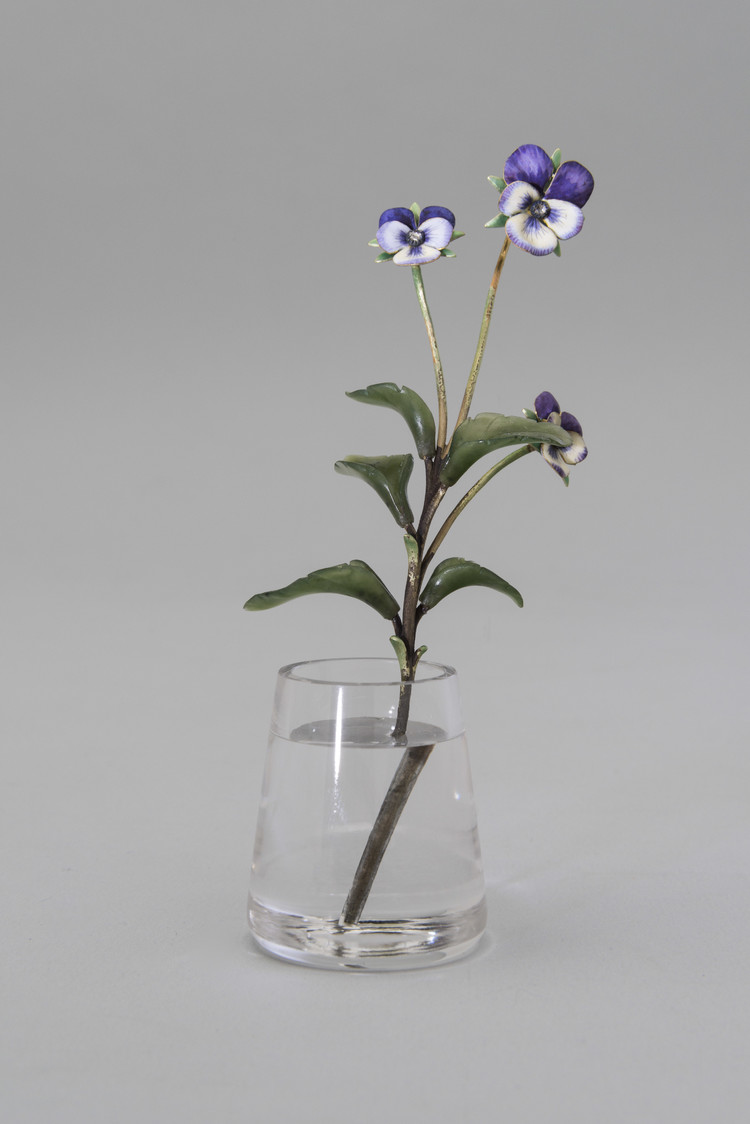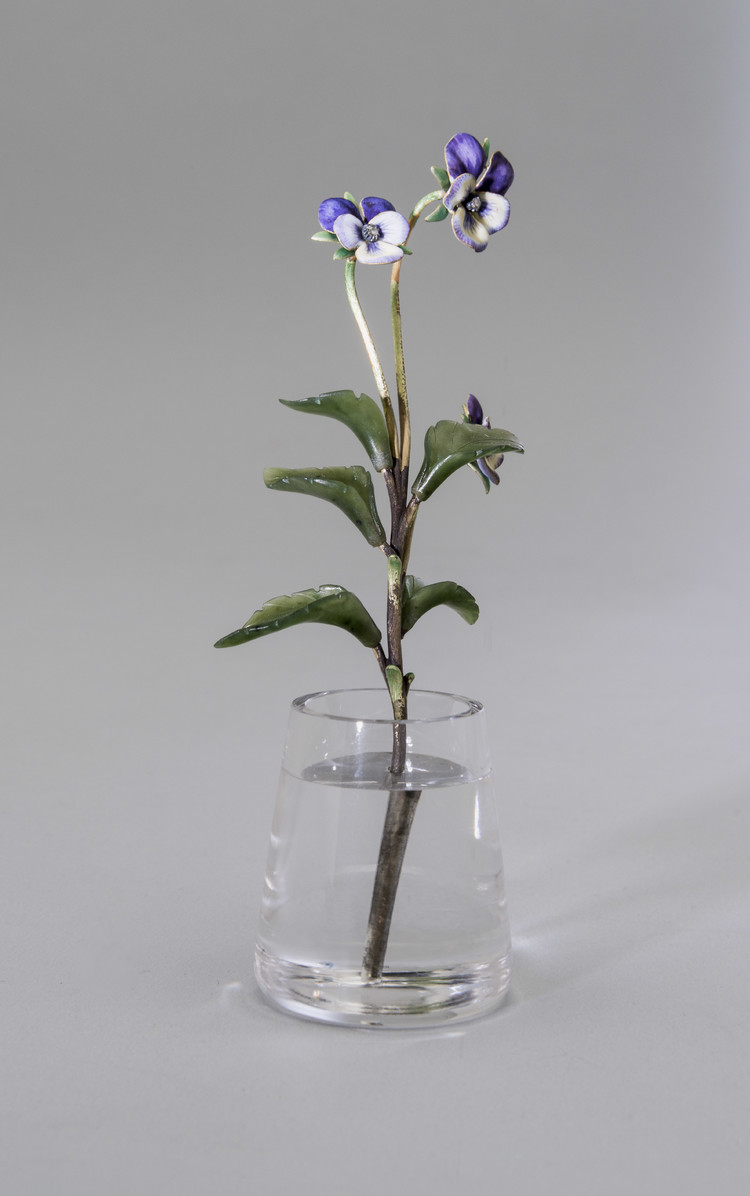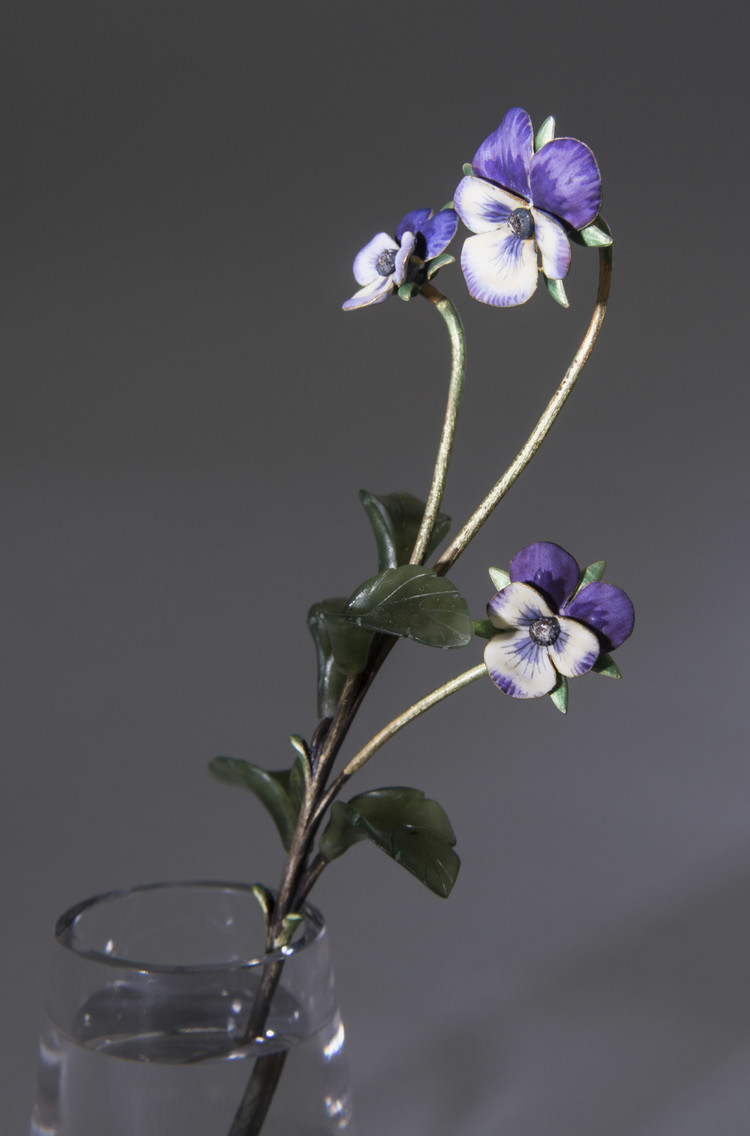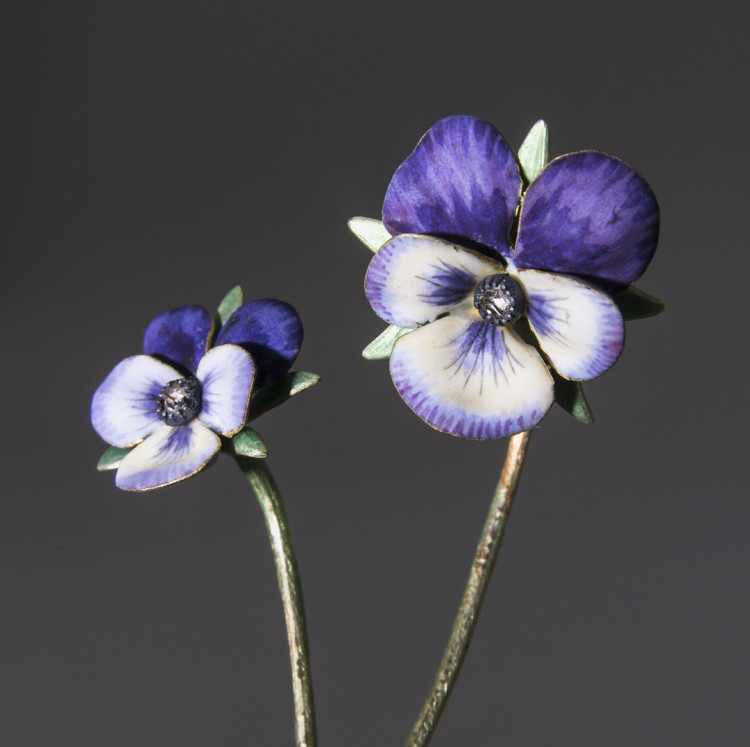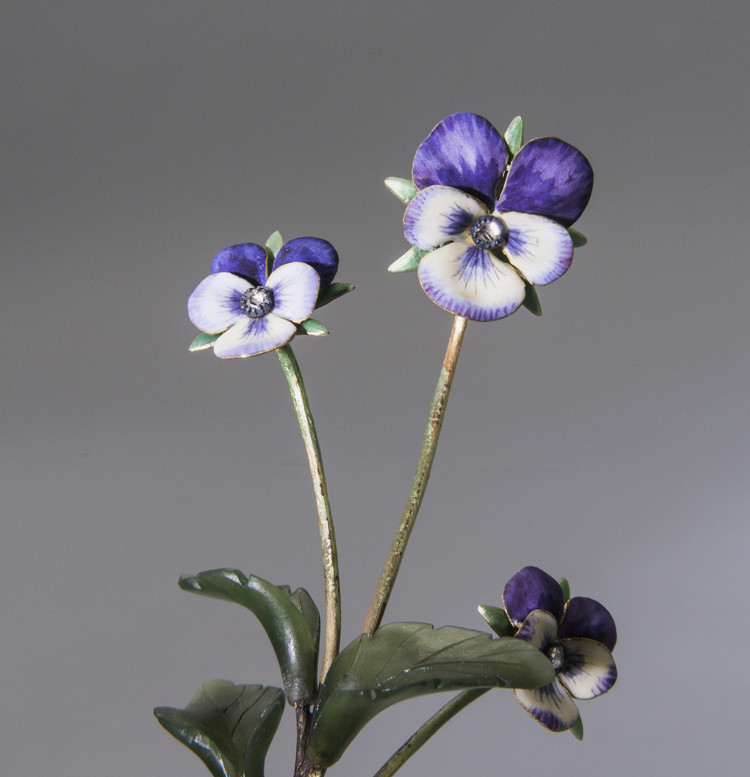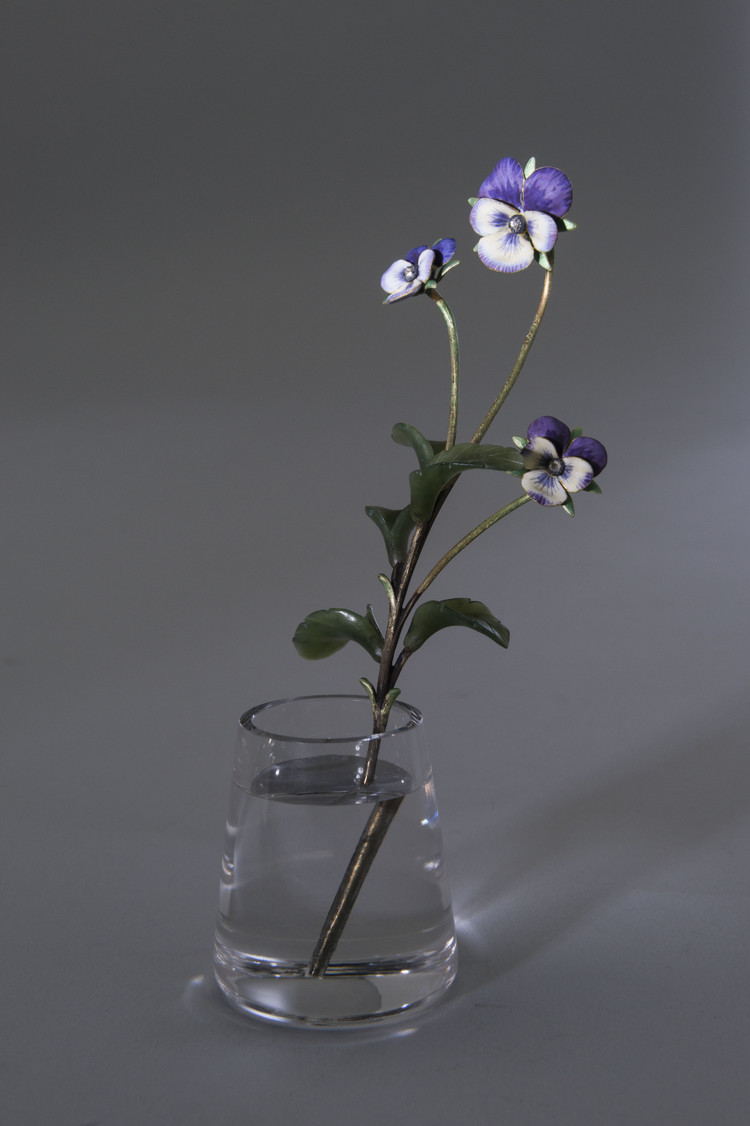Among the House of Fabergé's objets de faintaisie, flower studies were held in very high regard. As the jury of the 1900 Paris Exposition noted, the objects were “craftsmanship at the very limits of perfection, the transformation of a jewel into a true object of art.” Nature, seriously studied by the workmasters and artisans of the House of Fabergé, became not only an example to follow but also a source of artistic inspiration.
The conscious rejection of clinical accuracy and utility in favor of an aspiration for beauty, so characteristic of the turn of the 20th century, was the fertile ground that the Fabergé flowers sprouted from. Truth be told, not everyone was so enthusiastic for the Fabergé flowers. For instance, a journalist who interviewed Carl Fabergé wrote in an article in a 1914 issue of the magazine Capital and Manor that he found them fragile and much too expensive: “Who buys such things? It’s money thrown to the wind!” The tsar’s jeweler retorted with dignity, “There are people who have grown fed up with diamonds and pearls, and it’s sometimes improper to give someone jewelry, but this sort of thing will do.”
Among the House of Fabergé’s delicate and tender flowers, the most common are wild pansies, which symbolized the affection of the one giving them for their beloved and were romantically called “Cupid’s delight.” This particular flower is made of gold and covered in the most delicate polychrome enamel. The leaves are carved out of nephrite, and the mountain crystal glass is so marvelously crafted that it seems like actually contains water.
